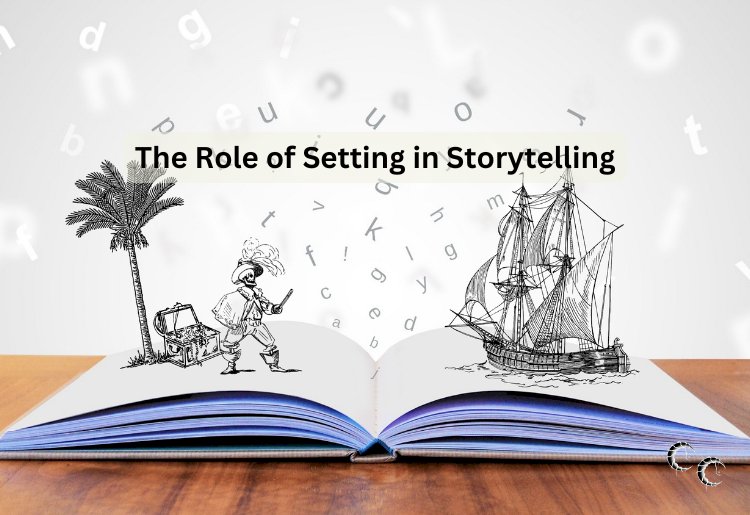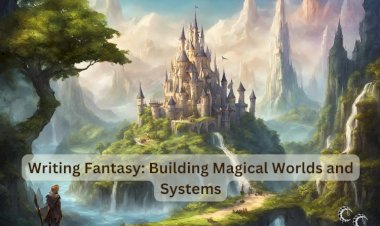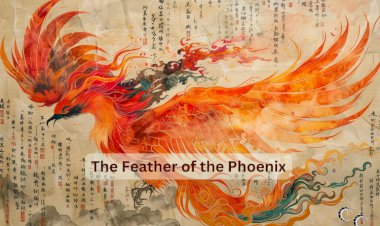The Role of Setting in Storytelling

A well-crafted setting serves as more than just a backdrop; it’s a powerful tool that shapes the narrative, enhances themes, and immerses readers in your story’s world. The setting has the ability to evoke emotions, define characters, and drive the plot. Here’s how setting plays a pivotal role in storytelling and how you can use it effectively.
Creates Atmosphere and Mood
The setting establishes the tone of your story and draws readers into its emotional landscape.
-
Dark and Stormy Nights: A stormy evening with howling winds creates tension, making it ideal for horror or mystery.
-
Sunlit Meadows: A bright, serene countryside sets a peaceful and hopeful tone for romance or coming-of-age stories.
The details you choose to emphasize—whether it’s the eerie creak of a floorboard or the scent of blooming flowers—can evoke specific feelings and draw readers deeper into the narrative.
Shapes Characters
Where your characters live, work, or travel can reveal their personalities, motivations, and struggles.
-
Urban Settings: A fast-paced city life might reflect a character’s ambition or stress.
-
Rural Settings: A small town or remote farm could emphasize simplicity, isolation, or close-knit community ties.
-
Fantasy Worlds: Unfamiliar terrains or magical realms often force characters to adapt, highlighting their resourcefulness and growth.
By anchoring characters to their environment, the setting becomes a silent partner in character development.
Drives the Plot
The setting is often central to the events that unfold in a story. It can create opportunities for conflict, limit choices, or serve as an active participant in the plot.
-
Survival Stories: Harsh climates like deserts or snowy mountains test the limits of endurance and ingenuity.
-
Thrillers: A claustrophobic environment, like a locked room or a submarine, amplifies tension and urgency.
-
Fantasy Epics: Quests are often defined by their settings—treacherous forests, ancient ruins, or perilous mountains dictate the challenges faced.
Using the setting as an active element in the story ensures it’s more than just a passive backdrop.
Enhances Themes and Symbolism
The setting can reinforce the deeper meanings and themes of your story.
-
Decay and Renewal: A crumbling castle might symbolize the fall of a dynasty, while springtime in a city park represents rebirth.
-
Conflict and Resolution: A war-torn battlefield reflects chaos, while a tranquil village might suggest peace and healing.
When integrated thoughtfully, the setting becomes a subtle yet powerful way to underscore the story’s message.
Immerses Readers in the World
A vividly described setting can transport readers, making the story feel alive and tangible.
-
Sensory Details: Engage the senses by describing the sights, sounds, smells, tastes, and textures of a place.
-
Unique Features: Whether it’s a futuristic metropolis or a medieval hamlet, highlighting distinctive elements makes the setting memorable.
The more immersive the setting, the easier it is for readers to lose themselves in the story.
Adapts to the Story’s Needs
Different stories require different approaches to setting. In some cases, it may play a subtle role, while in others, it takes center stage.
-
Character-Driven Stories: The setting might recede into the background, letting characters and relationships take precedence.
-
Epic Adventures: Here, the setting often becomes a character in its own right, influencing every aspect of the narrative.
Flexibility in how you use the setting allows it to support the story without overwhelming it.
Conclusion
The setting is a versatile and essential element in storytelling, capable of enhancing every aspect of your narrative. By thoughtfully crafting your story’s environment, you can create a richer, more engaging experience for your readers. Whether it’s a bustling cityscape, a magical forest, or a post-apocalyptic wasteland, make your setting an integral part of your storytelling toolkit.


























